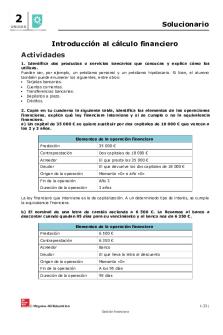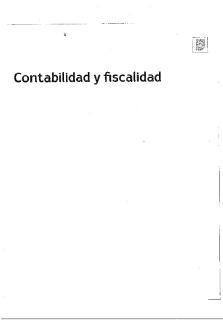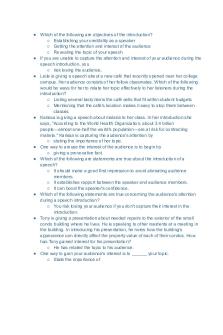Paul E. Tippens. Física Conceptos y Aplicaciones. 7ma Edic. Ed. Mc Graw Hill- Capitulo 22 PDF

| Title | Paul E. Tippens. Física Conceptos y Aplicaciones. 7ma Edic. Ed. Mc Graw Hill- Capitulo 22 |
|---|---|
| Course | Física 3 |
| Institution | Universidad Autónoma del Estado de Morelos |
| Pages | 16 |
| File Size | 726.1 KB |
| File Type | |
| Total Downloads | 67 |
| Total Views | 130 |
Summary
Paul E. Tippens. Física Conceptos y Aplicaciones. 7ma Edic. Ed. Mc Graw Hill- Capitulo 22 Ondas del sonido
Problemario resuelto, del capitulo 22, del libro de Física E. Tippens, séptima edición, capitulo 22 ondas del sonido, ejercicios resueltos en ingles...
Description
Physics, 6th Edition
Chapter 22. Sound
Chapter 22. Sound Speed of Sound Waves 22-1. Young's modulus for steel is 2.07 x 1011 Pa and its density is 7800 kg/m3. Compute the speed of sound in a steel rod. Y
v=
ρ
=
2.07 x 1011 Pa
;
7800 kg/m3
v = 5150 m/s
22-2. A 3-m length of copper rod has a density 8800 kg/m3, and Young's modulus for copper is 1.17 x 1011 Pa. How much time will it take for sound to travel from one end of the rod to the other? Y
v=
v=
ρ s t
;
=
1.17 x 1011 Pa
t =
8800 kg/m3 s v
=
;
2(3 m) 3646 m/s
v = 3646 m/s
;
22-3. What is the speed of sound in air (M = 29 g/mol and temperature is 300C? v=
γRT M
t= 1.65 ms
γ = 1.4) on a day when the
Use the approximation formula to check this result.
=
(1.4)(8.314 J/kg K)(2730 + 300 )K ; 0.029 kg/mol
v = 331 m/s + 0.6
v = 349 m/s
m/s 0 (30 C); v = 349 m/s C 0
22-4. The speed of longitudinal waves in a certain metal rod of density 7850 kg/m 3 is measured to be 3380 m/s. What is the Young's modulus for the metal? v=
Y
ρ
;
v2 =
Y
ρ
; Y =ρv2 = (7850 kg/m3)(3380 m/s)2;
44
Y= 8.97 x 1010 Pa
Physics, 6th Edition
Chapter 22. Sound
22-5. If the frequency of the waves in Problem 22-4 is 312 Hz, what is the wavelength? v = fλ;
λ =
v f
=
3380 m/s 312 Hz
λ = 10.8 m
;
22-6. Compare the theoretical speeds of sound in hydrogen (M = 2.0 g/mol, γ = 1.4) with helium (M = 4.0 g/mol, γ = 1.66) at 00C. vH =
γRT
vHe =
γRT
M
1.4)(8.314 J/mol K)(273 K)
=
0.002 kg/mol
;
vH= 1260 m/s
1.66)(8.314 J/mol K)(273 K) ;
=
vHe= 971 m/s
0.004 kg/mol
M vHe vH
=
971 m/s 1260 m/s
vHe = 0.771 vH
;
*22-7. A sound wave is sent from a ship to the ocean floor, where it is reflected and returned. If the round trip takes 0.6 s, how deep is the ocean floor? Consider the bulk modulus for sea water to be 2.1 x 10 9 Pa and its density to be 1030 kg/m3. v=
B
ρ
2.1 x 109 Pa
=
1030 kg/m3
;
h = vt = (1328 m/s)(0.3 s);
v = 1428 m/s
h = 428 m
Vibrating Air Columns 22-8. Find the fundamental frequency and the first three overtones for a 20-cm pipe at 200C if the v= 331 m/s + (0.6 )(300) = 343 m/s.
pipe is open at both ends. fn
=
nv
; 2l
f1
=
(1)(343 m/s) (2)(0.20 m)
(First overtone, n = 2)
fn = nf1;
45
=858 Hz
f1= 858 Hz
f2 = 2(857.5 Hz) = 1715 Hz
Physics, 6th Edition
Chapter 22. Sound 22-8 (Cont.)
fn = nf1;
(2nd overtone, n = 3) (3rd overtone, n = 4)
f2 = 3(857.5 Hz) = 2573 Hz
fn = nf1;
f2 = 4(857.5 Hz) = 3430 Hz
0
22-9. Find the fundamental frequency and the first three overtones for a 20-cm pipe at 20C if the pipe is closed at one end. fn
=
nv
; 4l
=
f1
(1)(343 m/s) (4)(0.20 m)
=429 Hz
f1= 429 Hz
(First overtone, n = 3)
fn = nf1;
f2 = 3(429 Hz) = 1290 Hz
(2nd overtone, n = 5)
fn = nf1;
f2 = 5(429 Hz) = 2140 Hz
(3rd overtone, n = 7)
fn = nf1;
f2 = 7(429 Hz) = 3000 Hz
22-10. What length of closed pipe will produce a fundamental frequency of 256 Hz at 20 0C? fn
=
nv 4l
l =
;
(1)(343 m/s) 4(256 Hz)
;
l = 0.335 m;
l = 33.5 cm
22-11. What length of open pipe will produce a fundamental frequency of 356 Hz at 20 0C? fn
=
nv 2 l
l =
;
(1)(343 m/s) 2(356 Hz)
;
l = 0.482 m;
l = 48.2 cm
22-12 What length of open pipe will produce a frequency of 1200 Hz as it first overtone on a day when the speed of sound is 340 m/s? fn
=
nv 2l
;
l=
first overtone is for n = 2 ] [For open pipe,
2(340 m/s) 2(1200 Hz)
;
l = 28.3 cm
22-13. The second overtone of a closed pipe is 1200 Hz at 200C. What is the length of the pipe. The second overtone for a closed pipe occurs when n = 5, and v = 343 m/s. fn
= nv ; 4l
l =
5(343 m/s) ; 4(1200 Hz) 46
l = 35.7 cm
Physics, 6th Edition
Chapter 22. Sound
*22-14. In a resonance experiment, the air in a closed tube of variable length is found to resonate with a tuning fork when the air column is first 6 cm and then 18 cm long. What is the frequency of the tuning fork if the temperature is 20 0C?
[ v = 343 m/s at200C. ]
The distance between adjacent nodes of resonance is one-half of a wavelength.
λ 2
= 18 cm - 6 cm;
λ = 24 cm; f
v
343 m/s
λ
0.24 m
= =
;
f = 1430 Hz
*22-15. A closed pipe and an open pipe are each 3 m long. Compare the wavelength of the fourth overtone for each pipe at 200C. ?
(Only odd harmonics allowed for closed pipe.)
For an open pipe, the fourth overtone is the fifth harmonic, n = 5. Open (fourth overtone): λn
=
2l n
;
λ5 =
2(3 m) 5
;
λ5 = 1.20 m
For closed pipe, the fourth overtone is the ninth harmonic, n = 9. Closed (fourth overtone): λ n =
4 l ; n
λ9 =
4(3 m) 9
;
λ9 = 1.33 m
Sound Intensity and Intensity Level 22-16. What is the intensity level in decibels of a sound whose intensity is 4 x 10 -5 W/m2?
β = 10 log
I I0
= 10 log
4 x 10-5 W/m2 1 x 10-12 W/m2
;
β= 76.0 dB
22-17. The intensity of a sound is 6 x 10-8 W/m2. What is the intensity level?
β = 10 log
I I0
= 10 log
6 x 10-8 W/m2 1 x 10-12 W/m2
47
;
β= 47.8 dB
Physics, 6th Edition
Chapter 22. Sound
22-18. A 60 dB sound is measured at a particular distance from a whistle. What is the intensity of this sound in W/m2?
β = 10 log
I
= 60 dB;
106
=
I 0
I
;
I = (106)(1 x 10-12 W/m2); I = 1 x 10-6 W/m2
I0
*22-19. What is the intensity of a 40 dB sound?
β = 10 log
I
I 0
= 40 dB;
104
=
I I0
;
I = (104)(1 x 10-12 W/m2); I = 1 x 10-8 W/m2
*22-20. Compute the intensities for sounds of 10 dB, 20 dB, and 30 dB.
β = 10 log
I
I 0
β = 10 log
I I 0
β = 10 log
I
I 0
= 10 dB;
101
=
= 20 dB;
102
=
= 30 dB;
103
=
I I0 I I0 I I0
;
I = (101)(1 x 10 -12 W/m2); I = 1 x 10-11 W/m2
;
I = (102)(1 x 10-12 W/m2); I = 1 x 10-10 W/m2
;
I = (103)(1 x 10-12 W/m2); I = 1 x 10-9 W/m2
22-21. Compute the intensity levels for sounds of 1 x 10 -6 W/m2, 2 x 10-6 W/m2, and 10-6 W/m2.
β = 10 log
β = 10 log
β = 10 log
I I0 I I0 I I0
-6
2
= 10 log 1 x 10-12 W/m 2 1 x 10 W/m
= 10 log
2 x 10-6 W/m2 1 x 10-12 W/m2 -6
β= 60.0 dB
;
β= 63.0 dB
;
β= 64.8 dB
2
= 10 log 3 x 10-12W/m 2 1 x 10 W/m
48
;
3x
Physics, 6th Edition
Chapter 22. Sound
22-22. An isometric source of sound broadcasts a power of 60 W. What are the intensity and the intensity level of a sound heard at a distance of 4 m from this source? I =
P 2
60 W
=
4π r
2
= 0.2984 W/m 2 ;
I = 0.298 W/m2
4π(4 m)
β = 10 log
I
= 10 log
I0
0.2984 W/m2 1 x 10-12 W/m2
β= 115 dB
;
22-23. A 3.0-W sound source is located 6.5 m from an observer. What are the intensity and the intensity level of the sound heard at that distance? I = P 2 4π r
W 5.65 x 10-3 = 4π3.0 (6.5 m)2 =
β = 10 log
I I0
= 10 log
I = 5.65 x 10-3 W/m2
W/m2 ;
0.2984 W/m2 1 x 10-12 W/m2
β= 97.5 dB
;
22-24. A person located 6 m from a sound source hears an intensity of 2 x 10-4 W/m2. What intensity is heard by a person located 2.5 m from the source? I 1r12
= I 2r22 ;
I2
=
2 I1 r 1 2 2
r
=
(2 x 10-4 W/m2 )(6 m)2 (2.5 m)
;
2
I = 1.15 x 10-3 W/m2
*22-25. The intensity level 6 m from a source is 80 dB. What is the intensity level at a distance of 15.6 m from the same source?
β = 10 log
I
I
= 80 dB;
108
=
0
I 1r12
I I
;
I = (108)(1 x 10 -12 W/m2); I = 1 x 10-4 W/m2
0
= I 2r22 ;
I2
=
β = 10 log
2 I1 r 1 2
r2 I
I0
=
(1 x 10-4 W/m2 )(6 m)2
= 10 log
(15.6 m)
2
1.48 x 10-5 W/m2 1 x 10-12 W/m2
49
;
;
I2 = 1.48 x 10-5 W/m2
β= 71.7 dB
Physics, 6th Edition
Chapter 22. Sound
The Doppler Effect Assume that the speed of sound in 343 m/s for all of these problems. 22-26. A stationary source of sound emits a signal at a frequency of 290 Hz. What are the frequencies heard by an observer (a) moving toward the source at 20 m/s and (b) moving away from the source at 20 m/s?
= fs
f0
f0 = fs
V V
(Approach = +, recede = -)
343 m/s + 20 m/s + v0 = 290 Hz ; − vs 343 m/s - 0
f0 = 307 Hz
343 m/s + (-20 m/s) + v0 = 290 Hz ; V − vs 343 m/s - 0
V
f0 = 273 Hz
22-27. A car blowing a 560-Hz horn moves at a speed of 15 m/s as it first approaches a stationary listener and then moves away from a stationary listener at the same speed. What are the frequencies heard by the listener? (Approach = +, recede = -) f0
f0
= fs
343 m/s + 0 + v0 = 560 Hz ; V − vs 343 m/s - 15 m/s
V
f0 = 586 Hz
m/s + 0 = fs VV −+ vv0 = 360 Hz 343343 ; m/s - (-15 m/s) s
f0 = 537 Hz
22-28. A person stranded in a car blows a 400-Hz horn. What frequencies are heard by the driver of a car passing at a speed of 60 km/h?
Approaching: f0
v0
= 60
=
fs V V
(Approach = +, recede = -)
km 1000 m 1 h h
1 km
= 16.7 m/s 3600 s
m/s + 16.7 m/s ; +− vvs0 = 400 Hz 343 343 m/s - 0
At same point as car there is no change: Leaving: f 0 = fs
V + v0 V
− vs
f 0 = 400 Hz
343 m/s + (-16.7 m/s) = 400 Hz ; 343 m/s - 0
50
f0 = 419 Hz
f0 = 381 Hz
Physics, 6th Edition
Chapter 22. Sound
22-29. A train moving at 20 m/s blows a 300-Hz whistle as it passes a stationary observer. What are the frequencies heard by the observer as the train passes? Approaching: f0
= fs
V +v0 V
− vs
343 m/s + 0 = 300 Hz ; 343 m/s 20 m/s
When at the same position there is no change:
Leaving:
f0
=
fs
f0 = 319 Hz
f= 300 Hz
0
+ v0 343 m/s + 0 = 300 Hz ; V − vs 343 m/s - (-20 m/s)
V
f0 = 283 Hz
*22-30. A child riding a bicycle north at 6 m/s hears a 600 Hz siren from a police car heading south at 15 m/s. What is the frequency heard by the child? (Approaches are +) Approaching: f0
= fs
V +v0 V
− vs
343 m/s + 6 m/s = 600 Hz ; 343 m/s - 15 m/s
f0 = 638 Hz
*22-31. An ambulance moves northward at 15 m/s. Its siren has a frequency of 600 Hz at rest. A car heads south at 20 m/s toward the ambulance. What frequencies are heard by the car driver before and after they pass? Before passing: f0
=
=
fs
After passing: f0
(Approach = +, recede = -)
343 m/s + 20 m/s + v0 = 600 Hz ; V − vs 343 m/s - 15 m/s
f0 = 664 Hz
+ v0 343 m/s + (-20 m/s) = 600 Hz ; V − vs 343 m/s - (-15 m/s)
f0 = 541 Hz
fs
V
V
*22-32. A truck traveling at 24 m/s overtakes a car traveling at 10 m/s in the same direction. The trucker blows a 600-Hz horn. What frequency is heard by the car driver? The car is moving away, so v0 = -10 m/s; Truck is approaching, so vs = +24 m/s f0 = fs
+ v0 343 m/s + (-10 m/s) = 600 Hz ; V − vs 343 m/s - (+24 m/s)
V
51
f0 = 626 Hz
Physics, 6th Edition
Chapter 22. Sound
*22-33. A 500-Hz sound source is heard by a stationary observer at a frequency of 475 Hz. What is the speed of the train? Is it moving toward the observer or away from the observer? f0
= fs
V V
− vs
V
+ v0
V
− vs
= 0.950; vs
=
fo
;
=
fs V
V + 0 V
f0
;
− vs
fs
= 0.95V − 0.95vs ;
−0.05(343 m/s) 0.950
;
=
475Hz
= 0.950
Hz 500 0.95v s
= − 0.05V
vs = -18.1 m/s, away
The negative sign means the train is moving away from the observer.
Challenge Problems 22-34. The speed of sound in a certain metal rod is 4600 m/s and the density of the metal is 5230 kg/m3. What is Young’s modulus for this metal? v=
Y
ρ
; v2 =
Y
ρ
; Y =ρv2 = (5230 kg/m3)(4600 m/s)2;
Y = 1.11 x 1011 Pa
22-35. A sonar beam travels in a fluid for a distance of 200 m in 0.12 s. The bulk modulus of elasticity for the fluid is 2600 MPa. What is the density of the fluid? v=
200 m 0.12 s
= 1667 m/s;
v=
B
ρ
2
; v
=
B
ρ
; ρ=
B v2
=
2.60 x 109 Pa (1667 m/s)2
ρ = 936 kg/m3 22-36. What is the frequency of the third overtone for a closed pipe of length 60 cm? Third overtone is for n = 7: f 7 =
7v 4 l
;
f7 =
52
(7)(343 m/s) (4)(0.60 m)
f1= 1000 Hz
Physics, 6th Edition
Chapter 22. Sound
22-37. A 40-g string 2 m in length vibrates in three loops. The tension in the string is 270 N. What is the wavelength? What is the frequency? 2 l
λ
=
n
2(2 m)
=
3
Fl
v=
;
f =
v = 116 ft/s;
v
λ
(270 N)(2 m)
m
λ= 1.33 m
=
= 116 m/s ; 1.33 m
0.040 kg
f = 87.1 Hz
22-38. How many beats per second are heard when two tuning forks of 256 Hz and 259 Hz are sounded together? f’- f = 259 Hz – 256 Hz = 3 beats/s *22-39. What is the length of a closed pipe if the frequency of its second overtone is 900 Hz on a day when the temperature is 20C? The second overtone for a closed pipe occurs when n = 5, and v = 343 m/s. f n
=
nv 4 l
;
5(343 m/s) ;
l =
l = 47.6 cm
4(900 Hz)
*22-40. The fundamental frequency for an open pipe is 360 Hz. If one end of this pipe is closed, what will be the new fundamental frequency? (n = 1 for fundamental ) We will first find the length of an open pipe that has a frequency of 360 Hz f n =
nv 2l
l =
;
1(343 m/s) 2(360 Hz)
;
l = 47.6 cm
Now, take this length for a closed pipe to find new frequency: f 1 =
(1)v 4 l
;
f
=
(343 m/s) ; 4(0.476 m)
53
f = 180 Hz
Physics, 6th Edition
Chapter 22. Sound
*22-41. A 60-cm steel rod is clamped at one end as shown in Fig. 23-13a. Sketch the fundamental and the first overtone for these boundary conditions. What are the wavelengths in each case?
Boundary conditions = node at right, antinode to left:
λ1 = 4l= 4(0.60 m);
Fundamental
λ1 = 2.40 m
First overtone adds one node, 1st ovt. = 3rd harmonic.
λ
=
4l
=
4(0.60 m)
First overtone
λ = 0.800 m
;
*22-42. The 60-cm rod in Fig. 22-13b is now clamped at its midpoint. What are the wavelengths Fundamental
for the fundamental and first overtone? Boundary conditions: A node must be at th...
Similar Free PDFs

solucionario 2 - Mc graw hill
- 23 Pages

Contabilidad 1º parte libro mc graw hill
- 110 Pages

Gestion de RRHH Mc graw HILL
- 244 Pages
Popular Institutions
- Tinajero National High School - Annex
- Politeknik Caltex Riau
- Yokohama City University
- SGT University
- University of Al-Qadisiyah
- Divine Word College of Vigan
- Techniek College Rotterdam
- Universidade de Santiago
- Universiti Teknologi MARA Cawangan Johor Kampus Pasir Gudang
- Poltekkes Kemenkes Yogyakarta
- Baguio City National High School
- Colegio san marcos
- preparatoria uno
- Centro de Bachillerato Tecnológico Industrial y de Servicios No. 107
- Dalian Maritime University
- Quang Trung Secondary School
- Colegio Tecnológico en Informática
- Corporación Regional de Educación Superior
- Grupo CEDVA
- Dar Al Uloom University
- Centro de Estudios Preuniversitarios de la Universidad Nacional de Ingeniería
- 上智大学
- Aakash International School, Nuna Majara
- San Felipe Neri Catholic School
- Kang Chiao International School - New Taipei City
- Misamis Occidental National High School
- Institución Educativa Escuela Normal Juan Ladrilleros
- Kolehiyo ng Pantukan
- Batanes State College
- Instituto Continental
- Sekolah Menengah Kejuruan Kesehatan Kaltara (Tarakan)
- Colegio de La Inmaculada Concepcion - Cebu












